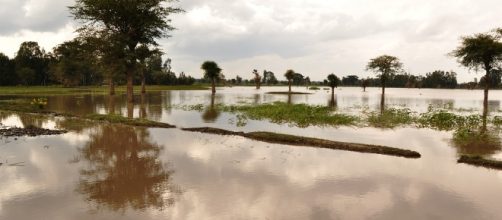Haiti has again experienced disaster. In 2008, four storms: Fay, Gustav, Hanna, and Ike killed nearly 800 people, flooded towns and decimated its agricultural sector. In 2010, most of Haiti was again leveled by a 7.1 magnitude earthquake that killed more than 300,000 people. Several hundred thousand more were injured and 1.5 million were displaced. Even though 13.34 billion dollars was allocated for aid relief, 55,000 people remained homeless in September 2016.
Washed away
On Thursday evening, Hurricane Irma made her presence felt. Officials confirm that many highways and bridges were submerged by raging floodwaters, while others were washed away.
Scores of homes fell to the ground, while some were covered by mudslides. Its agricultural city of Fort Liberty was completely flooded and destroyed rice and plantain fields. Several livestock herds were also killed. Lack of monitoring of heavy deforestation left much of the country vulnerable to flooding. Haiti is home to 11 million people, with over half the population, estimated to be living below the poverty line.
Some have criticized Haiti's evacuation effort and labeled it as tardy and lackadaisical. Eyewitnesses said many residents were seen trying to set up shelters in a Catholic church, two schools, and the public library, late on Thursday. However, Mayor Louis Jacques Etienne has insisted that most Haitians simply refuse to listen to the authorities.
Speaking to the Washington Post, he said. "Look, they don’t believe you when you tell them there’s a hurricane coming; they need to see it for themselves.” Oxfam’s regional communications coordinator Tania Escamilla believes the reason was dire. She said residents refused to leave their homes because they feared looting or other types of malicious destruction.
Haiti’s National Protection Agency believes that as many as 600,000 people were affected by Irma, with most of those losing their homes.
Poverty adds to the desperation
While residents were warned in advance to board up their homes or move to higher ground, many lament that they did not have the resources to do so. One fruit seller, Nadeige Jean, complained that she and many of her neighbors felt helpless.
She said there was no money to even afford basic food supplies, far less buy wood to protect their dwelling structures. Speaking to journalists, Juan remarked “I guess we are worried, but we are already living in another hurricane - hurricane misery. I don’t even have a tin roof. If the winds come, I can’t do anything but hope to live.”
Aid workers now fear water borne diseases and a potential cholera outbreak. They say children are particularly vulnerable, given that many live in swamped areas and those who don't, have no clothes or footwear. A cholera epidemic after the 2010 earthquake, killed thousands across Haiti. Water sanitation remains a major problem. UN agencies confirmed on Friday 8 September morning that they were already stationed in northern Haiti. Medical and food aid will be distributed to affected communities.


